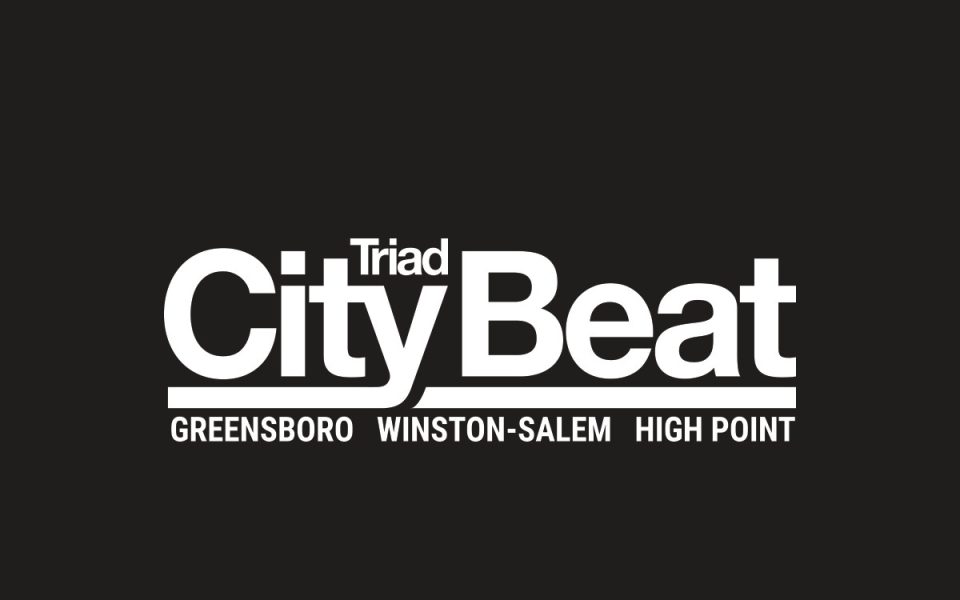Ryan Saunders, High Point’s urban tactician, wants to manage the Pit, an improvised site for creative happenings next to the Amtrak station.
The Pit, a 1970s-era parking deck adjacent to the High Point Amtrak Station, collapsed decades ago and then was excavated, leaving an indentation in the urban landscape that suggests a recessed Roman Coliseum designed for the set of Blade Runner. It features a ramp that allows food trucks to drive down into its guts, walls that are perfect for graffiti or murals — take your pick — and an arena that would accommodate a rave just as readily as a farmer’s market.
It’s the kind of accidental feature in a cityscape that delights architect Andrés Duany. The nation’s leading new urbanist, Duany and his firm are based in Miami, a city famous for impromptu parties in such reclaimed spaces.
“The thing is edgy; the thing is about lighting and chain-link fence and leaving it the way it is, and spontaneous, extremely low cost. How do I know this works? Because there’s one of these in Miami that has emerged in the last year. Very low cost, high management. And it’s cleaning up. It’s the coolest place in Miami. And it’s just a bunch of empty parking lots. It’s the programming of the future. The look is exactly this. The look is edgy as can be. I’ve never seen an edgier place than this. You actually won’t harm yourself, but it looks like you will.
“This totally bypasses and leaves in the dust whatever Winston-Salem thinks it’s doing, you know, whatever Greensboro thinks it’s doing,” he continued. “That’s old, 20th Century stuff. It’s pretty good, but it’s not what’s coming up.”
The Pit also captured the imagination of Peter Freeman, a second-generation architect in High Point whose firm led a community stakeholder process to come up with ideas for developing the site, and Ryan Saunders, who took the lead on throwing a party there the last night of Duany’s visit to the city last year.
City leaders balked at a proposal to spend $1 million to renovate the Pit that came out of an inclusive community input process led by Freeman, who said he was asked to incorporate everyone’s ideas.
“It was a big dream and we attached a price tag on it,” Freeman said. “We were never engaged to do a project with a specific price tag. If the city wanted us to do that we would be tickled to, but that’s a different animal.”
It was at Freeman’s suggestion that City Project, a nonprofit whose executive director receives her salary from the city, invited Duany to develop a master plan for urban revitalization. Freeman and his firm did much of the groundwork in advance of Duany’s visit, and have continued to produce design work after his departure. But Saunders, who has built a network of artists, cycling enthusiasts, craft brewers and other entrepreneurs, has been the movement’s primary tactician, organizing and promoting a series of events, murals and demonstration projects to show what a revitalized city can look like.
Now Saunders wants a crack at managing the Pit. Assistant City Manager Randy McCaslin said the city has asked two groups, including Create Your City led by Saunders, to present proposals for managing the space. He said the principals of the other group have asked the city to keep their identities a secret as they assemble their group. Contrary to rumors, Freeman said he is not part of the second group vying for control of the Pit.
McCaslin said the city has not advertised the project to solicit bids from other interested parties, adding that there’s no legal requirement to do so. But he said the city might elect to advertise for bids after receiving proposals from Saunders and the other interested party.
Saunders said the energy and excitement after Duany’s visit last May has begun, and he wants to make something happen with the Pit before the initiative stalls altogether.
“The Pit has always been at the top of everybody’s mind,” he said. “The Pit has always been a big hope that everybody looks at that will be the center to everything. I saw that million-dollar plan that was presented was not going to go anywhere. I saw that it’s been since last May, and nothing’s happened. I wanted to step in and enact a plan that can be enacted fast. Get criticism. Take that into consideration and make adjustments as needed.”
Saunders said his proposal calls for the minimum investment required to make the Pit functional and safe so that it can be used as soon as possible.
A draft of Saunders’ proposal seeks clarification on whether the city would consider “providing amnesty for the noise ordinance so that we can have entertainment until 2 a.m. on certain nights.”
McCaslin said a possible adjustment in the noise ordinance to accommodate events at the Pit is among a number of issues that need to be addressed by the city as the project unfolds.
City Attorney JoAnne Carlyle said other challenges likely to arise with the Pit are agreements in place to rent parking space during the furniture market and easements associated with neighboring property owners.
“If you were a property law professor it would be a great example for a class,” she said.
Despite their different roles, Saunders and Freeman share a common vision for the Pit.
“My interest is that we make it a safe place, and also a place that really begins to incubate the arts and design pieces that tie back into the economic fabric that is High Point. We have such a great history of artisans, woodworkers and metal workers and potters. These things are anchored in our DNA.
“We need to be part of the big-picture programming of urban art, craft beer, Yadkin Valley wine and the culinary expertise that comes from GTCC and Johnson & Wales [University]. It needs to be something that attracts young people from the region, the nation and internationally. We have this stage twice a year with the furniture market for a worldwide audience. It would be great if the Pit became a place to incubate and give young people the opportunity to show off their wares and talents. That’s the vision.”
Join the First Amendment Society, a membership that goes directly to funding TCB‘s newsroom.
We believe that reporting can save the world.
The TCB First Amendment Society recognizes the vital role of a free, unfettered press with a bundling of local experiences designed to build community, and unique engagements with our newsroom that will help you understand, and shape, local journalism’s critical role in uplifting the people in our cities.
All revenue goes directly into the newsroom as reporters’ salaries and freelance commissions.





Leave a Reply